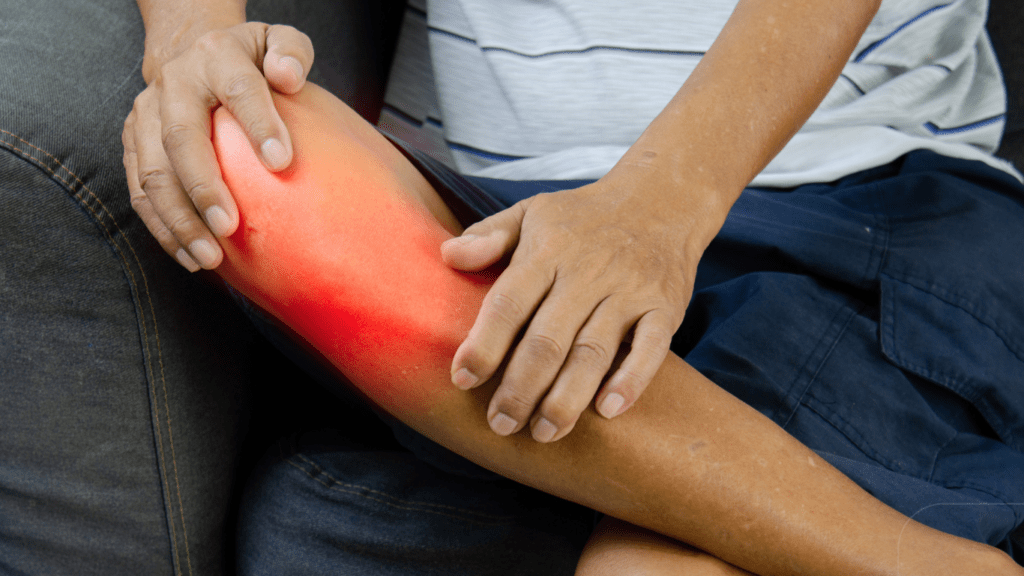As a seasoned football player, I’ve come to understand the crucial role that warm-ups and cool-downs play in optimizing performance and preventing injuries on the field. In the fast-paced world of football, these pre and post-match routines are often overlooked, yet they are fundamental to a player’s overall well-being and success.
Before diving into the intensity of a match, a proper warm-up session not only prepares the body physically but also mentally for the challenges ahead. Similarly, a thorough cool-down routine aids in the body’s recovery process, reducing the risk of strains and ensuring longevity in a player’s career. Understanding the significance of incorporating these practices into training schedules can make a notable difference in a player’s performance and overall health on the pitch.
The Importance of Warm-Ups in Football
Effective warm-ups play a crucial role in preparing football players for optimal performance while reducing the risk of injuries. Here, I’ll delve into the benefits of a well-rounded warm-up routine and key exercises specifically tailored for football players.
Benefits of an Effective Warm-Up
- Enhanced Physical Performance: A proper warm-up increases blood flow to muscles, enhancing flexibility, speed, and strength during gameplay.
- Injury Prevention: By gradually increasing heart rate and loosening muscles, warm-ups reduce the likelihood of strains, sprains, and other injuries.
- Mental Preparation: Warm-ups help players focus, improve coordination, and mentally prepare for the physical demands of a match.
- Improved Technique: Engaging in dynamic movements during warm-ups can enhance technique and skill execution on the field.
- Dynamic Stretches: Incorporate leg swings, high knees, and lateral lunges to improve flexibility and range of motion.
- Plyometric Drills: Include exercises like box jumps and cone drills to enhance power, speed, and agility.
- Running Drills: Perform sprints, shuttle runs, and agility ladder drills to simulate game-like movements and improve cardiovascular endurance.
- Ball Work: Integrate dribbling, passing, and shooting drills to improve ball control, touch, and accuracy during gameplay.
Implementing a structured warm-up routine with a focus on dynamic movements, flexibility, and skill-specific exercises can significantly benefit football players by priming their bodies for peak performance and reducing the risk of injuries.
Understanding Cool-Downs in Football
Cool-downs are a crucial aspect of post-football match or training routine. They play a vital role in aiding the body’s recovery process and minimizing muscle soreness.
Why Cool-Downs Matter
Cool-downs matter because they help gradually lower the heart rate, regulate blood flow, and prevent the buildup of lactic acid in muscles. By incorporating cool-downs into their regimen, players can enhance flexibility, reduce the risk of injury, and promote faster recovery. It’s a key component in promoting overall player well-being.
Recommended Cool-Down Techniques
Effective cool-down techniques in football include light jogging or walking, static stretching focusing on major muscle groups, foam rolling to alleviate muscle tightness, and gentle exercises to promote circulation and muscle relaxation. These techniques aid in preventing stiffness, reducing muscle fatigue, and ensuring players remain supple for their next training session or match.
Integrating Warm-Ups and Cool-Downs into Training Sessions

When it comes to integrating warm-ups and cool-downs into training sessions in football, I ensure thorough planning and implementation to maximize performance and prevent injuries.
Planning Effective Sessions
In planning effective training sessions, I prioritize a well-structured approach that includes dynamic warm-up routines tailored to the specific demands of football. By incorporating dynamic stretches, plyometric drills, running exercises, and ball work at the beginning of the session, I aim to enhance players’ flexibility, power, speed, agility, and technical skills. These activities not only prepare the body for the upcoming physical exertion but also mentally engage the players, setting a positive tone for the training ahead.
During the training session, I seamlessly integrate various warm-up components such as shuttle runs, high knees, leg swings, and passing drills to ensure a comprehensive preparation that mimics the movements and intensity of football play. This proactive approach not only reduces the risk of injuries but also optimizes the players’ physical conditioning, allowing them to perform at their best during practice sessions and matches.
Common Mistakes to Avoid
In the context of warm-ups and cool-downs, I emphasize the importance of avoiding common mistakes that can compromise the effectiveness of these essential components. One common error is neglecting the warm-up altogether or rushing through it without proper attention to detail. Skipping warm-ups robs players of the opportunity to prepare their bodies adequately for the physical demands of training or gameplay, increasing the likelihood of strains, sprains, or muscle injuries.
Another prevalent mistake is overlooking the importance of cooling down after a training session or match. Failing to engage in proper cool-down activities, such as light jogging, static stretching, foam rolling, or gentle exercises, can lead to muscle stiffness, soreness, and delayed recovery. By omitting the cool-down phase, players risk prolonged muscle fatigue and decreased flexibility, impacting their readiness for subsequent training sessions and potentially increasing the likelihood of injury.
By steering clear of these common pitfalls and adhering to a structured approach in planning and executing warm-ups and cool-downs, I ensure that football players benefit from optimized performance, injury prevention, and overall well-being throughout their training sessions and competitive matches.
The Impact on Player Performance and Injury Prevention
Research studies and real-life examples consistently demonstrate the positive effects of proper warm-ups and cool-downs on player performance and injury prevention in football.
- Enhanced Performance: By incorporating dynamic warm-up routines before training or matches, players can experience improved performance levels, including increased flexibility, power, speed, and agility. Research by sports scientists has shown that a well-structured warm-up can positively impact sprinting abilities, jump height, and overall physical readiness on the field.
- Injury Reduction: Studies have highlighted the role of comprehensive warm-up and cool-down protocols in reducing the risk of injuries among football players. Engaging in specific exercises like dynamic stretching and plyometric drills before activity can help prepare the muscles and joints for the demands of the game, thereby decreasing the likelihood of strains, pulls, and more serious injuries during play.
- Muscle Recovery: Proper cool-down techniques post-exercise, such as light jogging, static stretching, and foam rolling, have been shown to aid in muscle recovery and reduce post-training soreness. Research findings suggest that incorporating these practices can enhance blood circulation, promote muscle relaxation, and help maintain players’ physical condition for subsequent training sessions or matches.
- Long-Term Benefits: Longitudinal studies have demonstrated the cumulative advantages of consistent warm-ups and cool-downs over time. By prioritizing these practices in their training regimen, football players can not only improve their immediate performance but also develop resilience against injuries, contribute to their overall fitness levels, and prolong their active playing careers.

 Danielo Fleischeronic is the visionary founder of Awesome Football Network, a premier destination for in-depth football coverage and analysis. His commitment to the sport is reflected in the platform's rich content, which includes breaking news, match analyses, and expert commentary. Danielo’s extensive knowledge and passion for football drive the network’s mission to provide fans with the latest insights and updates from around the world.
In addition to his role as founder, Danielo is also an accomplished article writer. His writing covers a broad spectrum of football-related topics, from tactical breakdowns to player profiles, offering readers a comprehensive understanding of the game. Through his work, Danielo aims to enrich the football experience for enthusiasts and professionals, making Awesome Football Network a trusted resource in the football community.
Danielo Fleischeronic is the visionary founder of Awesome Football Network, a premier destination for in-depth football coverage and analysis. His commitment to the sport is reflected in the platform's rich content, which includes breaking news, match analyses, and expert commentary. Danielo’s extensive knowledge and passion for football drive the network’s mission to provide fans with the latest insights and updates from around the world.
In addition to his role as founder, Danielo is also an accomplished article writer. His writing covers a broad spectrum of football-related topics, from tactical breakdowns to player profiles, offering readers a comprehensive understanding of the game. Through his work, Danielo aims to enrich the football experience for enthusiasts and professionals, making Awesome Football Network a trusted resource in the football community.
